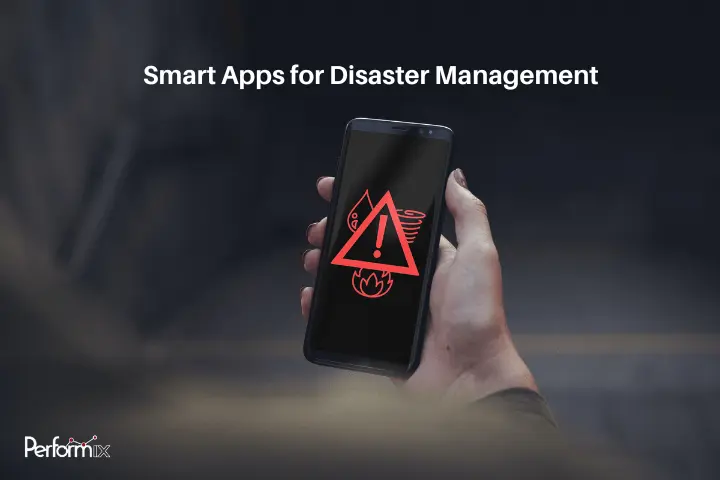Natural catastrophes like earthquakes and tornadoes are causing significant damage in the United States. Although the West Coast has a greater history of earthquakes, the Midwest and East Coast of America are not immune. Oklahoma and Kansas get a lot of strong storms for their size because they only have a few people living there. This makes it even more important for their residents to know how to deal with disasters.
Also, 2,360 earthquakes in the US have occurred in the last 30 days alone. This shows how important it is to have good crisis management plans to protect people and property. As technology has improved, smart apps have become a useful tool for managing disasters. These applications include real-time information, emergency texts, escape preparations, and missing-person searches.
As natural disasters threaten communities nationwide, using smart apps in disaster management has become increasingly important.
This article will explore the benefits of smart apps in disaster management and how they can enhance emergency response efforts.
Smart Apps for Disaster Management
Disaster management strategies have become more urgent than ever in the aftermath of natural disasters such as hurricanes, wildfires, and tornadoes. Despite the unpredictability of such events, smart apps have proven effective in reducing the effects of natural catastrophes and saving lives.
Smart apps use technologies like the Internet of Things (IoT), machine learning, artificial intelligence, and data collection to give people real-time information and tips during natural disasters. During natural disasters, these apps can give you important information like weather reports, orders to leave, emergency contacts, and safe routes. They can also help people prepare for disasters by providing tools, safety guides, and emergency response plans.
Smart apps can be lifesaving tools for citizens and disaster management teams during natural disasters. During the recent earthquakes in the United States, smart apps helped people figure out what to do by giving them real-time information about the size and location of the quake, as well as evacuation orders and road closures.
In 2023, governments, businesses, and communities must invest in smart applications to prepare for events, respond to them, and get back on their feet. Using smart apps, communities may strengthen their resilience and ensure quick disaster recovery.
Benefits of Investing in Smart Apps for Disaster Management
There are several benefits to investing in smart apps for disaster management, some of which include:
1. Real-time information
Smart apps provide real-time information on natural disasters and emergencies, helping citizens make informed decisions about their safety.
2. Personalized assistance
Smart apps offer personalized services based on where the user is and what they like. This makes it easier for people to find the information they need.
3. Improved communication
Smart apps can help improve communication between disaster management teams and citizens during emergencies, fostering a coordinated response effort.
4. Enhanced disaster preparedness
Smart apps can provide disaster preparedness information and resources, helping citizens prepare for disasters before they occur.
5. Cost-saving
Smart apps are available at little to no cost, making them accessible to many users. Due to their scalability, these applications are remarkably versatile and adaptive instruments for managing and responding to catastrophes.

Real-life examples of disaster management apps
- One of the best things about smart apps is that they can send people real-time information. During a natural disaster, people need to know what’s going on quickly and accurately. Smart apps can do this in different ways, such as push notifications, text messages, and posts on social media.
During Hurricane Harvey in Texas in 2017, the Harris County Flood Control District used a smart app called Flood Warning System to keep people up-to-date on flood situations in real-time. This app gave people up-to-date information that helped them keep their homes and families safer.
- Emergency responders must work together to assist those in need during a natural disaster. Smart apps can facilitate this coordination by providing a platform for communication and collaboration. Smart apps can also help people who react to emergencies organize their work and use their resources better.
For example, the Federal Emergency Management Agency’s (FEMA) Incident Management Assistance Team (IMAT) uses a smart app called the Incident Management Handbook to organize how they respond to crises. This app gives you a central place to share information and plan actions. This helps make sure that resources go where they are most needed.
- By collecting data on the impact of natural disasters, smart apps can help identify particularly vulnerable areas that need additional resources. This data can also be used to develop more effective disaster response plans and policies. Smart apps can also increase public awareness and preparedness for natural disasters.
For example, the Pacific Disaster Center (PDC) uses a smart app called DisasterAWARE to collect and analyze data on natural disasters worldwide. This app provides valuable insights into disasters’ impacts and helps inform disaster response and management efforts.
- These apps can help reduce the risk of injury or loss of life by providing information on preparing for and responding to disasters.
For example, the American Red Cross developed a smart app called Emergency that provides details on preparing for various disasters, including hurricanes, earthquakes, and wildfires. This app includes checklists, tips, and other resources to help people prepare for disasters and stay safe during emergencies.
Smart apps are not only valuable for disaster response but also find applications in healthcare, such as the creation of Blood Donation Maps. These maps help streamline blood donation efforts by:
- Locating nearby donation centers.
- Providing real-time blood availability updates.
- Enabling donor registration and appointment scheduling.
- Sending emergency alerts during crises.
- Promoting blood drives and mobile donation units.
Why investing in them can save lives and communities
To summarize, disaster management apps are the unsung heroes that can help us combat natural disasters and save lives. Funding these applications is essential because those who suffer from calamities might not have another chance at life. We must prioritize investing in smart apps for disaster management to ensure we are prepared to face future challenges.
Therefore, governments, businesses, and communities must prioritize investing in disaster management apps to safeguard lives and property.
We can mitigate the effects of natural disasters and guarantee a speedy recovery by employing the most recent technologies and strategies.
Partnering with us
Our mobile app development company in Minneapolis is committed to giving businesses and organizations the best innovative, customized apps. Working with our team can speed up rescue efforts and help companies deal with crises calmly and confidently.






